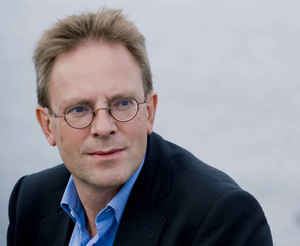Name Theo Verbey | Role Composer | |
 | ||
Education | ||
Theo verbey fractal symphony
Theo Verbey (born 5 July 1959 in Delft) is a Dutch composer.
Contents
- Theo verbey fractal symphony
- Theo verbey traurig wie der tod for choir and orchestra
- Biography
- Recent projects
- Works
- References
Theo verbey traurig wie der tod for choir and orchestra
Biography
Theo Verbey is a Dutch contemporary classical composer whose music is performed by orchestras and ensembles throughout the world. His style could be considered to be associated with Postmodern music. Verbey is also a skilled arranger who first achieved recognition for his orchestral instrumentation of Alban Berg's Piano Sonata, Op. 1, a piece he orchestrated in 1984 while still a student. He studied at the Royal Conservatory of The Hague where he graduated in 1986. His principle composition teachers were Peter Schat and Jan van Vlijmen. Upon completing his studies Verbey rapidly became one of the most performed of living Dutch composers. In 1987 he was awarded the Amsterdam Arts Fund's incentive award for young composers, and has since received commissions from the Royal Concertgebouw Orchestra, Amsterdam Sinfonietta, the London Sinfonietta, the Residentie Orchestra, the Dutch Radio Filharmonisch Orkest and the Dutch Radio Chamber Orchestra, Klangforum Wien, the Deutsche Oper Berlin and many others. Theo Verbey teaches at both the Royal Conservatory of The Hague and the Conservatorium van Amsterdam, as well as having been on the composition jury for the Queen Elisabeth Music Competition in Brussels in 1992 and 1997. His work shows a high regard for structure, beauty, and a great historical awareness, as well as a special regard for instrumental color and subtle harmonies.
Recent projects
Recent commissions include Traurig wie der Tod, a new work for orchestra and chorus premiered by the Netherlands Radio Filharmonisch Orkest and the Netherlands Radio Choir, conducted by James Gaffigan, as well as Lumen ad Finem Cuniculi, written for philharmonie zuidnederland and conducted by Dmitri Liss. The Brodsky Quartet commissioned Verbey to provide a segment for their celebrated song cycle, Trees, Walls, Cities. Verbey composed 4 Preludes to Infinity for The Stolz Quartet, a work which is included on their CD, Dutch Masters and Their Inspiration. More recently, the duo Andrea Vasi & Sebastiaan Kemner performed Ballade, a work for trombone and piano written especially for them. In 2007, Theo Verbey completed his second commission for the Royal Concertgebouw Orchestra: LIED, for Trombone and Orchestra, with Jörgen van Rijen as soloist. His Fractal Symphony was chosen by choreographer Regina van Berkel as music to accompany her ballet Memory of a Shape performed by Ballet Mainz in 2009. Van Berkel also based a second ballet based on Verbey's music, which was performed by the ballet company of the Deutsche Oper am Rhein in February/March 2011 under the title Frozen Echo. Memory of a Shape will receive its Dutch premier in 2017, when it is performed by Introdans. In November 2010, Theo Verbey's piece Bandersnatch for cello and pianola was premiered by Larissa Groeneveld as part of the Amsterdam Cello Biënnale. It was Mr. Verbey's second commission for the Biënnale.
In 2009/2010, Theo Verbey was Composer-in-Residence of the Brabant Philharmonic Orchestra, based in Eindhoven, the Netherlands. In celebration of that orchestra’s 60th jubilee, Verbey was commissioned to compose Orchestral Variations which showcases each section of the orchestra both individually and within the ensemble.
Verbey has also collaborated with Klangforum Wien on their Free Radicals program, providing a score for Man Ray's 1923 film, Retour à la Raison. This is not Theo Verbey's first contact with the medium of film: in 1994, film maker Alejandro Agresti used Verbey's piece TEGENBEWEGING as the basis of his short film which formed a segment of Hexagon, a film project made for the Holland Festival.
In addition to composing his own works, Theo Verbey has earned high regard for his orchestrations. One of his earliest successes, Alban Berg's Piano Sonata, Op. 1, has been performed many times by the Royal Concertgebouw Orchestra, among others. More recent orchestrations have included an arrangement of Leoš Janáček's piano sonata 1. X. 1905. In 2006 Theo Verbey was asked by Amsterdam Sinfonietta to arrange the three remaining movements of Alban Berg's Lyric Suite for string orchestra. At the invitation of ECHO (European Concert Hall Organization) this version of the Lyric Suite was included in Amsterdam Sinfonietta's successful 2011 tour of six major European cities. Mr. Verbey was granted permission by the heirs of Igor Stravinsky to complete the orchestration of the unfinished 1919 version of Les noces for voices, pianola, 2 cimbaloms, harmonium and percussion. This version has been so successful that Queen Beatrix of the Netherlands chose it for her annual Queen's Day Concert in her palace in The Hague. Verbey has also orchestrated three Mussorgsky song cycles (Sunless, the Nursery, and Songs and Dances of Death), which are regularly performed. He has also arranged Scriabin's Preludes op. 33, as well as Three Choral Preludes by J.S. Bach for oboe, violin, viola and cello.
